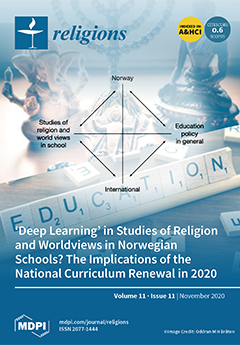The purpose of this study was to characterize early Donghak thought as the fusion of two horizons, one Confucian and the other Catholic. In particular, the study divided the Donghak founder Su-un Choe Je-u’s view of divinity into three stages, and showed how
[...] Read more.
The purpose of this study was to characterize early Donghak thought as the fusion of two horizons, one Confucian and the other Catholic. In particular, the study divided the Donghak founder Su-un Choe Je-u’s view of divinity into three stages, and showed how the evolution of his thought through these stages can be explained as the product of a dialogue between the Confucian monist tradition based on
qi or vital energy and the Catholic dualist tradition based on Thomistic scholasticism. The study adopted a comparative and historical methodology, whereby comparison was limited to similarities and differences between Su-un’s works and sources in the Confucian or Catholic tradition that we can reasonably assume to have been available to Su-un. It was found that Su-un’s thought in the early stage was marked by theistic features similar to the scholastic view of God, and that in the middle stage Su-un sought to accommodate this theism within a pantheistic framework based on the Confucian monist tradition. For convenience’ sake, this theism-within-pantheism can be referred to as Su-un’s “panentheism”. It is suggested that the creative tension within this panentheism motivated Su-un to introduce innovations in his thought. First, in the middle stage, Su-un rejected the monism of
li or pattern that was prevalent in the Neo-Confucian orthodoxy of his day, reverting to the older tradition of
qi-monism. Second, in the late stage of his thought, he appears to have rehabilitated
li as intelligent pattern that is the source of all signs of intelligence in the natural and moral order. As for the value of the approach adopted in this study, it enables us to make better sense of obscure details in Su-un’s works by placing them in their proper historical context, as evinced by the reading of Su-un’s late stage work “Buryeon Giyeon” presented herein. It is hoped that this approach will be applied more rigorously in future studies to deepen our understanding of the intellectual history of Donghak and Cheondogyo, along with various other new religions that emerged in Korea’s modern history.
Full article





